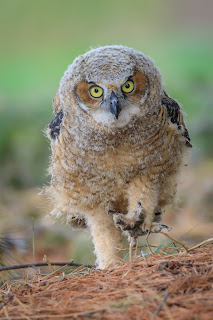And, despite chilly nights and damp mornings, there are still bees. I’m watching them fly busily on their rounds as I write this, actually. We’re all reveling in the afternoon sunshine. Earlier this morning, I shuffled through damp grass to see how they were doing, and to observe the insects when they were too cold to zoom away. Sure enough, I found a few fuzzy bumble bees clinging to the tufts of pollen-coated anthers like sleepy toddlers. These bees aren’t young’uns, though; they are nearing the end of their lives.
Have you ever watched a bumble bee breathing?
Bumble bees are one of the only types of native bees who form a colony—similar to honey bees—where a single queen produces 50 to 500 worker bees. She laid eggs all summer. The first round she fed and raised herself. In five weeks, those eggs hatched into larvae, pupated, and metamorphosed into adults. A few days after reaching maturity, that first generation took over care and feeding of their sisters. More bees could raise more bees, building on the colony’s success until the ultimate test this fall.
That test? Raising a set of new queens who are built to survive the winter. First, the old queen begins to lay unfertilized eggs. These will grow into male drone bees whose one job before they die is to fertilize females from a different colony. The act of laying unfertilized eggs triggers the queen to stop producing a particular pheromone. With that pheromone gone, the workers change their behavior, and start raising the fertilized eggs not as worker females, but as new queens.
I was hoping to find one of those new queens on my little backyard safari, but armed with a millimeter ruler, I only found 16 mm long common bumble bee workers (Bombus impatiens). Queens are at least 17 mm, according to the literature. These workers must still be seeking provisions for their colony, in a race against the frost. Not all nests get their timing right, and some succumb to killing cold or starvation before they can send their reproductive generation into the world.
To be successful, a new queen must stuff herself on nectar and pollen to build up fat stores for hibernation, the same way grizzly bears in Alaska bulk up to compete in Fat Bear Week in Katmai National Park. For a male drone to be successful, he just needs to stay alive long enough to mate with a female. He dies. She digs in for a long, cold winter.
This is different from honey bees, whose sugary stores allow the hive to survive the winter.
Bumble bees, like many tiny critters, endure the off-season in shallow, soil burrows protected by fallen leaves and eventually by an insulating blanket of snow. As I poked around looking for more bees, I was happy to see a tangle of dead leaves and stems in the pollinator garden. They will insulate the plants’ roots, and keep uncountable critters cozy through the drastic temperature swings and freezing cold. Yards that are too “clean” provide little shelter for our wild neighbors, and something as simple as not tidying up our gardens can save thousands of little lives.
Uploading my photos, I used iNaturalist to identify them, and also checked bugguide.net. I learned that male common bumble bees have yellow goatees, and females have black faces. I also discovered that a few common bumble bees have rusty brown abdomens instead of black.
 |
| A male common bumble bee with his blond facial hair. The cold temps make it way easier to get this close! He held very still... Photo by Emily Stone. |
And here, I’ll pull back the curtain a little bit. I wrote this much on one day, and then headed out on a geology field trip before finishing the article. On my way home, I decided to hike St. Peter’s Dome to catch peak fall colors from that spectacular viewpoint.
 |
| The view from St. Peter's Dome. |
Right where the trail starts, the Forest Service had planted a profusion of asters and goldenrod who were receiving the full force of the low afternoon sun. And on those flowers were more bumble bees that I’ve ever seen at one time. More than twenty crawled on a single plume of goldenrod.
By the time I hiked back down from the view (spectacular!) the sun had set and temperatures had dipped to 55 degrees. Now the bees were clinging to the flowers wherever they’d last been feeding, their muscles slowed and paralyzed by the chill. This made them much easier to photograph! I found a large queen with a yellow mane of fuzz, many smaller workers, and several males with their yellow goatees. I even spotted a worker with the rusty stripes. Two hundred photos later, I finally headed home.
 |
| Here's a rusty-phase worker on the left, and a new queen common bumble bee on the right. On sneezeweed. Photo by Emily Stone. |
This is a perfect example of why I love writing about seasonal events as they happen. Without having done some research on the handful of bees in our pollinator gardens, I wouldn’t have known what I was looking at when I found the profusion of bees along the trail. These coincidences bring me joy—and I hope they enhance your enjoyment of nature, too!
 |
| Just two dudes enjoying a hot pink aster! Photo by Emily Stone. |
For more than 50 years, the Cable Natural History Museum has served to connect you to the Northwoods. The Museum is now open with our exciting Mysteries of the Night exhibit. Connect with us on Facebook, Instagram, YouTube, and cablemuseum.org to see what we are up to.
















